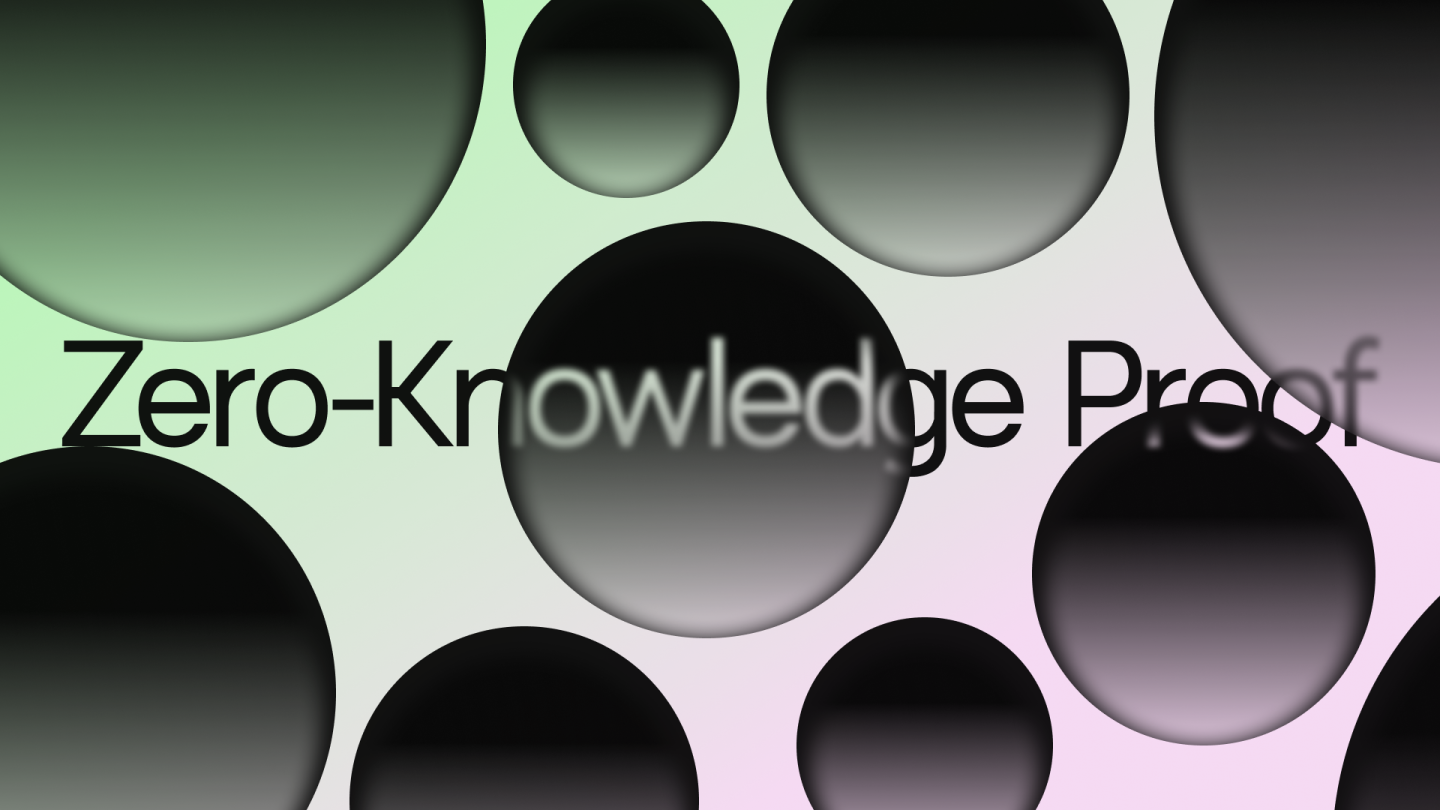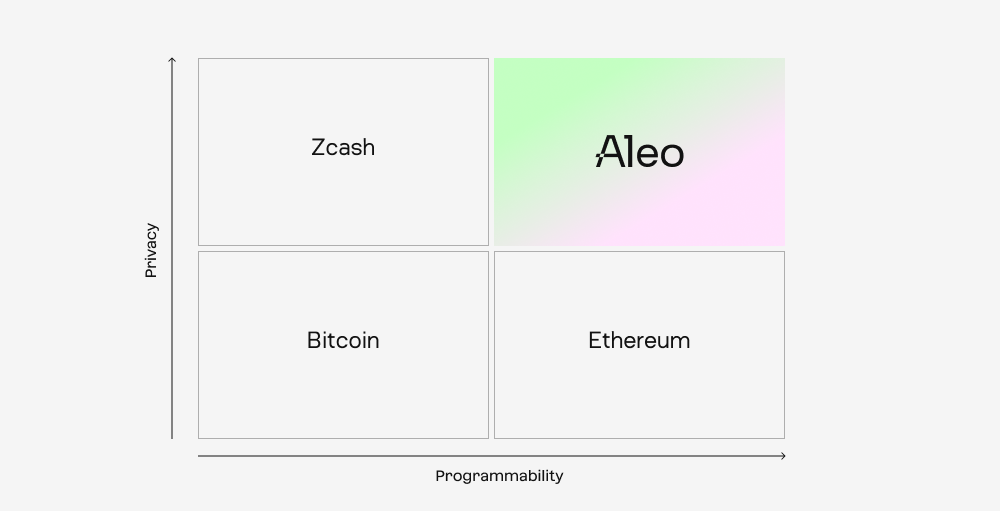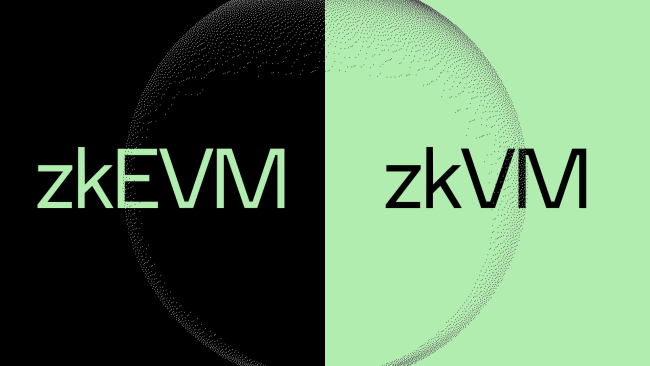
What is a zero-knowledge proof?
One of the core principles of Web3, transparency, can also be one of its greatest drawbacks. Nobody wants all of their online activity, from financial transactions to personal identity data, to be publicly available for anyone to view. In order for blockchains to scale and become more accessible, privacy has to be a priority.
Zero-knowledge proofs have the capability to transform how we protect, manage, and share our personal data. They allow people to prove that a statement is true without revealing the information itself, bringing a new level of privacy to transactions involving sensitive, confidential information.
If you're keen on understanding how zero-knowledge proofs work, their diverse applications and use cases, and how Aleo’s capabilities as a Layer-1, permissionless blockchain rooted in zero-knowledge technology can help you build truly secure applications, you’ve come to the right place.
What is a zero-knowledge proof?
A zero-knowledge proof (often abbreviated as “ZKP”) is a cryptographic protocol that can improve data privacy. It allows one party, known as the prover, to assure another party, the verifier, that a statement is true without revealing any extra information.

For example, the prover can convince the verifier that they know a specific number without actually revealing it. This can be done through a series of interactions or a single string of information, depending on the type of zero-knowledge proof used.
Zero-knowledge: ensuring private information stays private
The key feature of a zero-knowledge proof is its focus on privacy. It ensures that no additional information is exposed, making it a valuable tool in cryptographic protocols. This enables secure transactions and data verifications without compromising privacy.
Using zero-knowledge proofs, it's possible to validate the authenticity of a claim without revealing any of the underlying data that supports it. This has important implications for various applications, from protecting identity to conducting confidential financial transactions. Furthermore, it's a fundamental component in the development of privacy-focused platforms like Aleo.
History of zero-knowledge proofs
The concept of zero-knowledge proofs (ZKPs) has been around since the 1980s, a testament to its enduring relevance in the field of cryptography. Initially brought to light by Shafi Goldwasser, Silvio Micali, and Charles Rackoff, this cryptographic method has evolved from a theoretical concept to a practical solution for secure data verification.
Who invented zero-knowledge proofs?
In the early 1980s Goldwasser, Micali, and Rackoff were grappling with the question of how to facilitate secure communication in a world increasingly dependent on digital interactions. Their groundbreaking paper, often cited as the seminal work in this field, introduced the world to the idea of proving the veracity of information without revealing the information itself.
Initially, the cryptographic community met their work with some skepticism. The idea of proving something without giving away any information seemed paradoxical, almost too good to be true. However, as the practical applications of their work became apparent, skepticism turned into admiration. Over the years, their contributions have been acknowledged with numerous awards, including the Gödel Prize, further solidifying the importance of their work.
Their foundational research didn't just introduce a new cryptographic technique — it fundamentally changed how we think about trust and verification in digital communications. It laid the groundwork for a host of applications, from secure online transactions to sharing education transcripts confidentially.
Early use cases for zero-knowledge proofs
Initially, conversations surrounding zero-knowledge proofs stayed inside of academia. However, they quickly found real-world applications, starting with secure voting systems that ensured voter privacy while maintaining election integrity.
Digital signatures also benefited from zero-knowledge proofs, adding an extra layer of security to online transactions. Financial institutions also began exploring zero-knowledge for reducing the risk of fraud, and zero-knowledge proofs were also integrated into cryptographic protocols, enhancing secure data exchange between parties.
These early implementations showcased the practical utility of zero-knowledge, setting the stage for their broader adoption in various industries.
How zero-knowledge proofs work
In any zero-knowledge proof, there are two parties involved.
The Prover: This is the entity that wants to prove the validity of a certain claim without revealing any additional information.
The Verifier: This is the entity that needs assurance about the claim's validity but doesn't necessarily need to know the specifics behind it.
The interaction between these two roles forms the crux of a zero-knowledge proof. The Prover aims to convince the Verifier of the truth of a statement without giving away any extra details.
The role of randomness in enhancing security
One of the most intriguing aspects of zero-knowledge proofs is the use of randomness to bolster security. Random numbers or variables are introduced during the proof generation process. This randomness serves as an additional layer of complexity, making it computationally infeasible for malicious actors to reverse-engineer the proof or for the Verifier to glean additional information.
Randomness ensures that each proof is unique, even if it's generated for the same claim. This uniqueness is a deterrent against replay attacks, where an attacker might try to reuse a previously intercepted proof.
Types of zero-knowledge proofs
Zero-knowledge proofs aren't a one-size-fits-all solution. They come in a few different varieties, each with its unique characteristics and applications.

Let's break down the main types: Interactive Zero-Knowledge Proofs, Non-Interactive Zero-Knowledge Proofs, zk-SNARKs, and zk-STARKs, which are a new kind of proof that’s gaining popularity.
Interactive Zero-Knowledge Proofs
In Interactive Zero-Knowledge Proofs, the Prover and Verifier engage in a back-and-forth dialogue. This interaction is essential for the Verifier to be convinced of the claim's validity. While effective, the interactive nature can be a limitation in some scenarios.
Pros: High level of security, well-suited for real-time applications
Cons: Requires multiple rounds of interaction, not ideal for asynchronous systems.
Non-Interactive Zero-Knowledge Proofs
As the name suggests, Non-Interactive Zero-Knowledge Proofs eliminate the need for a dialogue between the Prover and Verifier. A single message from the Prover is sufficient for the Verifier to be convinced.
Pros: Efficient and scalable, perfect for blockchain and other decentralized systems
Cons: Slightly less secure compared to Interactive Zero-Knowledge Proofs
zk-SNARKs: The new kid on the block
zk-SNARKs (Zero-Knowledge Succinct Non-Interactive Argument of Knowledge) combine the best of both worlds. They are non-interactive, but offer a high level of security, making them popular for various applications including blockchain technology.
Pros: Highly secure, efficient, and requires no interaction
Cons: Complex setup and higher computational requirements
zk-STARKs: Transparent and Post-Quantum Secure Proof
zk-STARKs offer a level of transparency that zk-SNARKs don't. They don't require a trusted setup, making them more transparent and potentially more secure against quantum attacks.
Pros: No trusted setup required, quantum-resistant, highly scalable.
Cons: Larger proof sizes, more computational overhead.
Use cases and applications of zero-knowledge proofs
So, what can you use zero-knowledge proofs for?

Secure Identity Management Zero-knowledge proofs can revolutionize how we manage online identities. Imagine logging into an e-commerce site and making a purchase without the site ever knowing your actual credentials. You're verified, but your personal data stays with you. Financial Privacy in Banking Think about applying for a home loan where the bank confirms you meet all the financial criteria without you revealing your income or credit score. Zero-knowledge proofs could make this level of financial privacy a reality. Healthcare Data Security With ZKPs, your wearable device could send vital health metrics to your healthcare provider without exposing your identity or other sensitive data. It's healthcare data transmission with an added layer of privacy. AI and Machine Learning Confidentiality Companies could utilize zero-knowledge proofs to train artificial intelligence models on encrypted, multi-source data. For example, pharmaceutical research could be expedited by securely pooling data from multiple healthcare providers. One way to get started exploring zkML machine learning use cases is by using the Aleo zkML transpiler.
How the Aleo stack is changing the game
You've learned what zero-knowledge proofs are, their types, and how they're changing industries. Now, let's talk about Aleo, the ecosystem bringing zero-knowledge proofs to our everyday lives.
Why Aleo?
Aleo is zero-knowledge by design— the only full-stack Layer 1 blockchain integrating zero-knowledge at every level to build an actually secure internet. Aleo provides a zero-knowledge technology platform with uncompromising speed and privacy, allowing developers to build full-stack, private applications with the power of ZK on L1.

Founded in 2019 with the mission to build a truly private web experience powered by cryptography, the company’s platform gives developers and users unlimited computing potential at its core.
What is the Aleo Stack?
The Aleo ecosystem is like an iceberg — beneath the privacy-preserving applications visible above the surface is a vertically integrated set of tools all in one place.
Leo
Leo is Aleo's purpose-built ZK programming language. It enables writing ZK apps using high-level syntax that compiles down into lower-level representations.
Aleo Instructions
Aleo Instructions are akin to the assembly language of zero-knowledge proofs - simplifying the process of writing complex zero-knowledge circuits.
zk Circuit
A ZK circuit is essentially a formal representation of the computation or statement that a prover wants to prove to a verifier without revealing any sensitive details about the computation or statement itself. As we mentioned above, Aleo Instructions help simplify zkCircuits, allowing developers to build zero-knowledge applications faster.
SnarkVM
SnarkVM is the perfect ZK execution environment which enables unbound off-chain computation, removing limitations of on-chain-only execution.
SnarkOS
SnarkOS is the backbone of the Aleo Network. It handles data availability, consensus, and networking.
Aleo SDK
The Aleo SDK allows developers to easily build Aleo web apps using languages like JavaScript without zero-knowledge expertise.
Aleo is leading the way in making zero-knowledge proofs a regular part of our online lives. It's not just about a safer internet; it's about a digital world where privacy and utility go hand in hand.
If you’re interested in building your first private-by-default application on Aleo, check out our developer docs and join our Discord community.
About Aleo
Our blog features the stories of developer and privacy advocates building a better internet with zero knowledge.
About Kathie Jurek
Kathie Jurek is the Content Lead at Aleo, tasked with setting the direction for the conversations we have and where we have them. For 9 years, she’s led and created creative work in some of the most technical industries, from developer tools to robotics.
For further information contact us at hello@aleo.org


